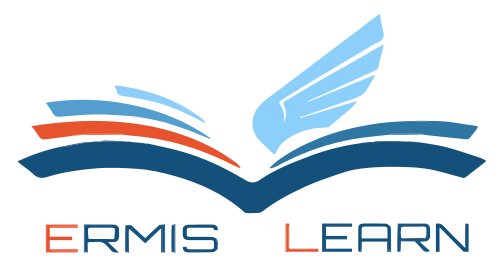
List of most popular scientific software written in Java
February 21, 2021 Reading time: 12 minutes
Love Java? Here is the most popular Java programs:
Largest online encyclopedia of physics, math and computing
February 21, 2020 Reading time: ~1 minute
In 2020, HandWiki (https://handwiki.org/) has become the largest online wiki encyclopedia of natural sciences and computing. It has more than 105,000 scholarly articles, incorporating the current Wikipedia articles on many research topics, scholarly articles submitted to the Wikipedia foundation, and various wiki books.
Wikipedia alternatives you should know about
February 21, 2020 Reading time: ~1 minute
Wikipedia remains the world"s biggest information resource used by communities of volunteers. Most of the other encyclopedic resources are smaller in size but, compared to Wikipedia, they are designed for specific areas of expertise and, typically, are maintained by non-for-profit organizations or persons with significant knowledge of specific topics. In many cases, they also have alternative publication policies for accepting online content, as well as the dispute resolution policies which have become increasingly important for the resources edited by large communities of experts.
Wikis for publishing scholarly articles on data science and software
February 21, 2019 Reading time: 4 minutes
By now you may already know that to add scholarly articles to the English version of Wikipedia is difficult due to the "notability" concept and tight control from anonymous editors (see this article). In recent years, entire Wikipedia topics and articles dedicated to software and data science have been wiped out by a few nameless characters without clearly-indicated scientific credentials. Their user pages are usually empty, and their login names tell nothing. That"s right - the "notability" of articles on Wikipedia is enforced by unnotable editors. This casts significant doubts on their ability to make correct decisions, and on the entire notability concept of wiki-style resources.
jPort - desktop menu to access free portable Java applications
February 21, 2019 Reading time: ~1 minute
jPort is finally out (and it is already release 1.4!). What is special about jPort project? jPort is a portable application launcher for Java-enabled platforms (Windows, Linux, Mac). It can launch dozens of free Java-powered programs for office, science, education, code development, entertainment and graphics.
Restored Wikipedia articles
April 22, 2018 Reading time: ~1 minute
About 15,200 scholarly articles permanently removed from Wikipedia in 2018 and 2019 have been restored by the Handwiki team. In 2018 and 2019, such articles did not pass the Wikipedia"s notability. As the result of this, a lot of useful content was lost. Articles on software programs and computing were the most affected by this Wikipedia trimming.
Currently the restored Wikipedia articles on computing, science and education can be found in HandWiki (https://handwiki.org). These articles cover the following topics:
- data analysis and mathematics
- software programs and libraries
- physics, astronomy and technology.
submitted by S.Chekanov
Using Multi-Layer Recurrent Neural Network for language models
February 22, 2018 Reading time: ~1 minute
Here is another example of how to use Multi-Layer Recurrent Neural Network (RNN package) designed for character-level language models. This neural network was trained using 165,000+ real titles of acts submitted to the Congress from CONGRESS.GOV. The training was performed using GPU. Then the trained RNN was used to create "fake" titles. Use this link to find which bill title is real and which is created by RNN.
This example of the RNN package is provided by Jahred Adelman (NIU).
Popularity of software programs for data science using recent reviews
February 21, 2018 Reading time: 16 minutes
In this article we will analyze the popularity of various software programs designed for data analysis using recently published reviews. These articles and blogs were written in the last two years, covering a wide range of software tools written in C++, Java and Python. Such programs are designed for data analysis, data mining, statistics and data visualization. Here is the list of articles used in our analysis of popularity of such software tools:
Popularity of programming languages in 2016
February 21, 2018 Reading time: 2 minutes
According to TIOBE Index for January 2016, the Java popularity index again has reached 21%, leaving behind C++ (6%), while Python index is only 3.8%. These numbers can be different for data analysts positions, of course, where Python is likely to be more popular than Java.
JTerm - Linux commands for Windows?
February 21, 2018 Reading time: ~1 minute
JTerm is an attempt to mimic Linux/Unix commands using 100% Java. Thus it works on Windows. This project is its infancy, but it is already very useful. For some, it may also look also more attractive than using Cygwin on Windows. First thing to notice - it is only 3M in size, a tiny program compared to the default Cygwin installation. Secondly, it has nice look and feel thanks to Nimbus L&F. In combination with JPort portable Java desktop, it may lead to interesting alternative to Cygwin.
The Mutilation of Wikipedia
February 21, 2018 Reading time: 7 minutes
There was a time when I just loved Wikipedia. In the early 1980s, the editors of the Oxford English Dictionary (OED) were planning a second edition of their semi-historical document but they realized they could not possibly handle all the cross-referencing and indexing of the envisaged new edition. The solution turned to be a major project consisting in "computerizing" the OED. They succeeded in getting successive editions but only after much effort.
DataMelt article on Wkipedia was vandalized
January 21, 2018 Reading time: ~1 minute
After 10 years in Wikipedia, a few editors have started a campaign to remove DataMelt Wikipedia article. Impossible requirements may hit 90% of Wikipedia content on free programs in Numerical software and Free science software (and more!) categories.
Using Neural Networks to create titles for scientific papers
February 22, 2017 Reading time: ~1 minute
Neural networks are getting smart and their outputs become increasingly realistic. Here is a neural network example created by Jahred Adelman who used the Multi-Layer Recurrent Neural Network (RNN package) designed for character-level language models. The neural net was trained using 600,000+ real paper titles taken from INSPIRE. Then it was used to create "fake" paper titles. Use this link to find which article title is fake and which is real.
S.Chekanov (ANL)
Top 40 Statistical Data Analysis Software Programs
February 21, 2017 Reading time: 12 minutes
Here is a list of 40 most popular commercial and free statistical and data analysis programs. The emphasis of this software listing is on financial and marketing applications. For more general and technical information please refer the corresponding links on the original source.
DataMelt
February 21, 2017 Reading time: 2 minutes

DataMelt ("DMelt") is a free software for numeric computation, mathematics, statistics, symbolic calculations, data analysis and data visualization. This program combines the simplicity of scripting languages, such as Python, Ruby, Groovy (and others), with hundreds of Java numerical and graphical packages. Unlike other similar programs, DataMelt can be used for scientific computations using Java, word"s most-popular enterprise programming language. The program runs on Windows/Mac OS/Linux and Android platform. DataMelt is a modern version of jHepWork (2005-2013) and SCaVis (2013-2015) programs.
RTextDoc. Editor for LaTeX / AsciiDoc structured documents
February 21, 2017 Reading time: ~1 minute
RTextDoc, editor written Java, is getting rather mature. Why another editor? RTextDoc is the only portable editor that runs from USB on any platform (Windows, Linux, Mac OS). It is the only editor that has instant grammar checking for 15 languages - a feature which is missing for all available LaTeX editors. Finally, it is the only editor for AsciiDoc documents
Recasting Java neural networks in Python
February 22, 2016 Reading time: 2 minutes
Many neural network applications implemented in Java, such as Neuroph, Encog and Joone, may look rather different when switching from the Java language to Python with the help of the DMelt computing environment. First of all, they look simpler. You can use your favorite Python tricks to load and display data. The Python coding is simpler for viewing and fast modifications. It does not require recompiling after each change. At the same time, the platform independence and multi-threading environment are guaranteed by the Java Virtual Machine.
As a simple example, consider Joone, the Java Object Oriented Neural Network. It is well-tested open source project that offers a highly adaptable neural networks for Java programmers. For the purposes of this blog, we will teach Joone to recognize a very simple pattern, such as XOR. The XOR operation's truth table is summarized as
[[0.0, 0.0, 0.0],[0.0, 1.0, 1.0],[1.0, 0.0, 1.0],[1.0, 1.0, 0.0]]
where three first two columns are inputs, and the last column is the output. Now let us put together a simple Python code that uses Joone's Java API:
http://datamelt.org/code/code.php?id=49760300.py
We assume that the neural network uses two input layers, one hidden (with 3 neurons), and one output layer (with one neuron). Now, start the DMelt program, and run this code in its editor. If you are using Mac/Linux, you can run this code in a batch mode with the command "dmelt_batch.sh code.py". You will see how the global error changes as a function of epoch. This trend is shown here.
Joone can be used for rather sophisticated tasks that involve future predictions. A popular example using Python calling Joone library deals with forecast in time series. For this task, we generate a time series in the form cos(x)*sin(x), add nose, and use this as input for our neural network training. The output image of our forecast code implemented in Python is shown here.
See more neural network examples implemented in Python/Jython and Java in DMelt Neural Network code examples.